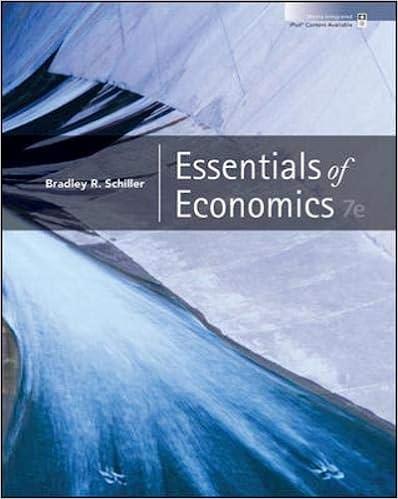Question
Caldara, Dario, Michele Cavallo, and Matteo Iacoviello (2016). Oil Price Elasticities and Oil Price Fluctuations. International Finance Discussion Papers 1173. 1)It focuses on identifying the
Caldara, Dario, Michele Cavallo, and Matteo Iacoviello (2016). Oil Price Elasticities and Oil Price Fluctuations. International Finance Discussion Papers 1173.
1)It focuses on
identifying the oil shocks using a structural vector autoregressive model of oil
market and proposes an identificationscheme to restrict the elasticity of
oil demand and oil supply. It concludes that 35 to50 percent of the oil
price fluctuations can be explained with the help of oil supply andoil
demand shocks. It also concludes a decrease in oil prices leads tohigh
economic activity in advanced economies and that the elasticity is important to
understand the source of movements in oil prices.The insights from this
article can be used to explain the oil price fluctuations and the oil demand
and supply.
Baumeister,
C., & Kilian, L. (2016). Forty years of oil price fluctuations: Why the
price of oil may still surprise us. Journal of Economic Perspectives, 30(1),
139-160
2) The article focuses on the
magnitude of the oil price shocks which depend on the expectations of oil
price.It tries to identify the determinantsofoil price
fluctuations and the causes of the fluctuations that have happened since
1973-1974. It discusses alternative measures of oil price expectations which
are employed by economists, central banks and households. It also
discussesexample about the difficulty arising in predicting the
determinants.Itdemonstrates how the timing and magnitude of shocks
change with the way the expectations of oil prices are defined. The insights
from this article can be used to model and understand the transmission of oil
price shocks.
Kim,
I. (2020). Swinging shale: Shale oil, the global oil market, and the
geopolitics of oil. International Studies Quarterly.
3)It focuses on
examining the conventional focus on the added volume in supplyand the
price plunge that occurred in 2014-2015. It tries to focus on the technical
specificationsthat act as incentives for the shale producers and help
them in maintain excess capacity. It studies the historical linkage of oil
market,excess capacity and the geopolitics and then compares the
effectiveness of shale producers and traditional producers. It also suggests
the direction to follow for future research.The insights from this article
can be used to explain how shale oil can be used as a substitute for
oiland what is cross price elasticity of demand between shale oil and
traditional oil.
Juvenal,
L., & Petrella, I. (2015). Speculation in the oil market. Journal of
applied econometrics, 30(4), 621-649
4) It focusses on
assessingthe role of speculation in the oil marketin increasing the
oil prices and investment in commodity markets.It identifies the oil
shock using dynamic factors model. It concludes thatglobal demand shocks and
the speculative shocks are the most important factors in determining the oil
price fluctuations.The author analyzed that the strengthened demand of
oilhas led to an increase in global oil prices and any co-movement
between prices of oil and other commoditiesare explained by global demand
shocks. The insights from this article can be used to find out about the role
of speculators in the oilmarket.
Razek,
N. H., &Michieka, N. M. (2019). OPEC and non-OPEC production, global
demand, and the financialization of oil. Research in International Business and
Finance, 50, 201-225.
5)The article focuses
on examining OPEC and non-OPEC production, drop in price of oil in 2014, demand
for oil in world and China and how oil can act as a financial asset. This is
done by the author by employing a vector autoregressive model. It concludes
that OPEC plays an important role in balancing oil marketsand taking oil
as a financial asset can explain the price movements in oil. Some other
conclusions are thatnon-OPEC production has its own
importanceandoil prices get affected bydemandin China.
The insights from thisarticle can be used to explain the pricing of oil
in the presence of OPEC.It can also be used to know the supply and demand
of oil.
Brown,
S. P., & Huntington, H. G. (2017). OPEC and world oil security. Energy
Policy, 108, 512-523.
6)It focuses on
developing a framework to evaluate the factors that influence the role of OPEC
in the world oil market. The authorhas tried to assess the policies that
change global oil demandand also tries to assess the impact of non-OPEC
supply on world oil supply security.It concludes that OPEC has become the
dominant producer of oil because of its market behavior and cost structure.
Also, the OPECmembers are unstable producers which causes insecurity in
the world supply of oil. The insights from this article can be used to explain
the market structure of oil industry and hoe OPEC production affects oil
prices.
Base on this above references and book.... can you please write me 5/6 pages papers by answering these points...?
The market structure for oil industry
The supply and demand for oil in that market structure
The pricing of oil at the presence of OPEC and the role of Speculators
Why shale oil is a substitute for oil and explain the news regarding the Cross elasticity of demand.
Step by Step Solution
There are 3 Steps involved in it
Step: 1

Get Instant Access to Expert-Tailored Solutions
See step-by-step solutions with expert insights and AI powered tools for academic success
Step: 2

Step: 3

Ace Your Homework with AI
Get the answers you need in no time with our AI-driven, step-by-step assistance
Get Started


